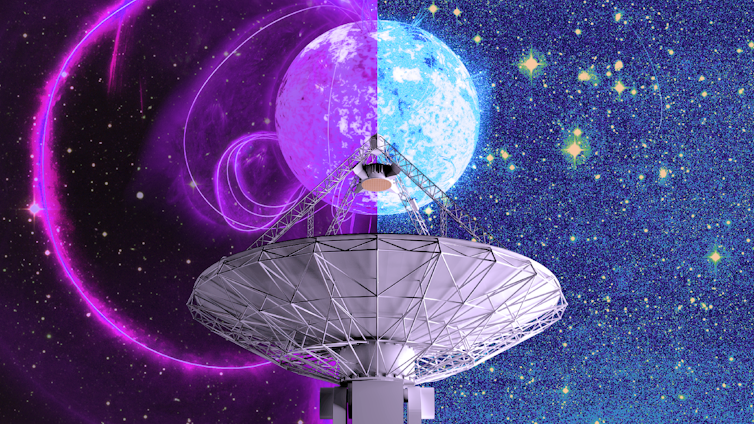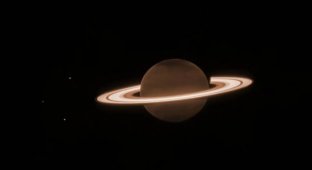Scientists from Australia have recorded unusual repeating signals from space (3 photos)
The signal is heterogeneous and repeats at intervals of about 54 minutes. 
Manisha Caleb and Emil Lenk recorded an unusual signal that they had not encountered before. Using the Square Kilometer Array Pathfinder (ASKAP) telescope in Western Australia, they were able to obtain pulses, the nature of which is not yet clear. 
ASKAP radio telescope
"We recently discovered a radio transient that is unlike anything astronomers have seen before. Not only does it have a cycle lasting almost an hour (the longest ever observed), but over several observations we have seen it sometimes emit long, bright flashes, sometimes quick and weak impulses, and sometimes nothing at all," the researchers say.
The origin of the signal with such a long period remains a deep mystery, and researchers speculate that it could have come from a slowly rotating neutron star. but this is just an assumption, because their cycle cannot be so long. It is also possible that the object emitting the pulses is a white dwarf - the remnant of a burned-out Earth-sized star that has run out of fuel. However, “it is not known how white dwarfs could generate radio signals that reach Earth.”
Another explanation is that the object belongs to a binary system in which a neutron star or white dwarf orbits another invisible star. However, all three versions are approximate and require further study. 
The object is called ASKAP J1935+2148. It is located in the plane of the Milky Way, approximately 15,820 light years away. years from Earth A study published in Nature Astronomy says that it exhibits 3 types of radiation:
bright pulsed state with linearly polarized pulses lasting 10-50 seconds;
weak pulsed state (about 26 times weaker than the bright state) with circularly polarized pulses lasting approximately 370 milliseconds;
a bright pulsed state with highly circular polarization. state of rest or extinction without impulses.
Manisha Caleb reports that if the signals weren't coming from the same point, researchers wouldn't believe they were coming from the same object. Further study of the signals will help scientists understand what is happening, track the source and, possibly, clarify the physics of the stars.






























